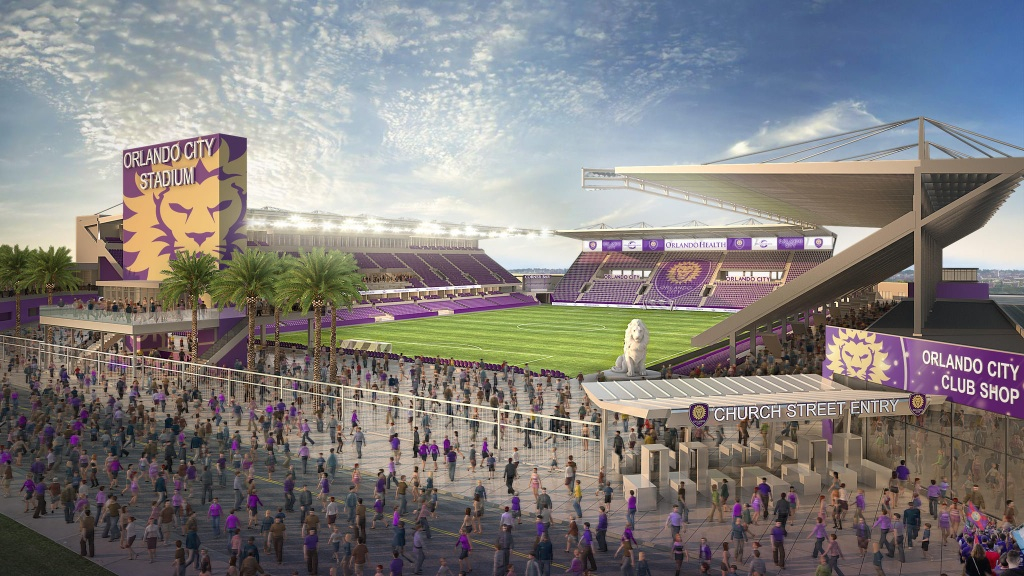Huge shift for the new Orlando City SC stadium plan: the team will privately finance a larger stadium than originally envisioned, with a 25,000-28,000-capacity facility expected to open in 2016.
The final cost of the new stadium hasn’t been determined, but the new Orlando City stadium plan eliminates any need for state money — which is tangled up in the state legislature’s unrelated debates over Medicaid funding — as well as Orange County ($20 million) and city ($15 million) money. Team ownership, led by Flávio Augusto da Silva, will also pay property taxes on the new facility. It will open next summer, which means the Lions will begin the season at the Citrus Bowl.
This is a dramatic change from the original plan for an $85 million facility that would have been owned by the city and leased to the Lions. It says a lot about the success of Orlando City FC to date: the team is second in MLS attendance, trailing only the Seattle Sounders. That success, which shows no sign of abating, led to Augusto da Silva and crew deciding to go it alone, per the Orlando Sentinel:
The new stadium plan was born three weeks ago when Orlando City’s board of directors met to discuss how to move forward with the club’s original plan for a 19,500-seat venue. The franchise was averaging more than 37,000 fans per game early in the season, and data points suggested the team had a demand of about 32,000 tickets per game.
“Suddenly, we’ve got a problem, a good problem to solve: 19,000, it seems, is not enough,” Augusto da Silva said. “We are much bigger than that; Orlando is much bigger than that. . . . We started hearing from our fans and our supporters and we got the message: We need a bigger stadium.”…
The move also allows the franchise to control all stadium revenue, including funds generated by naming rights, concession sales and hosting other events such as NCAA tournament games, World Cup qualifiers and concerts.
You can also add incredibly profitable friendlies to that list.
The new stadium will stay at the same projected site in the city’s Parramore neighborhood on the edge of downtown Orlando; the team will buy the land, where prep work and design has already started.

